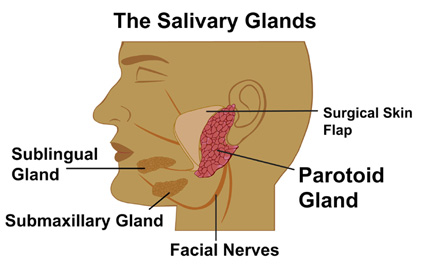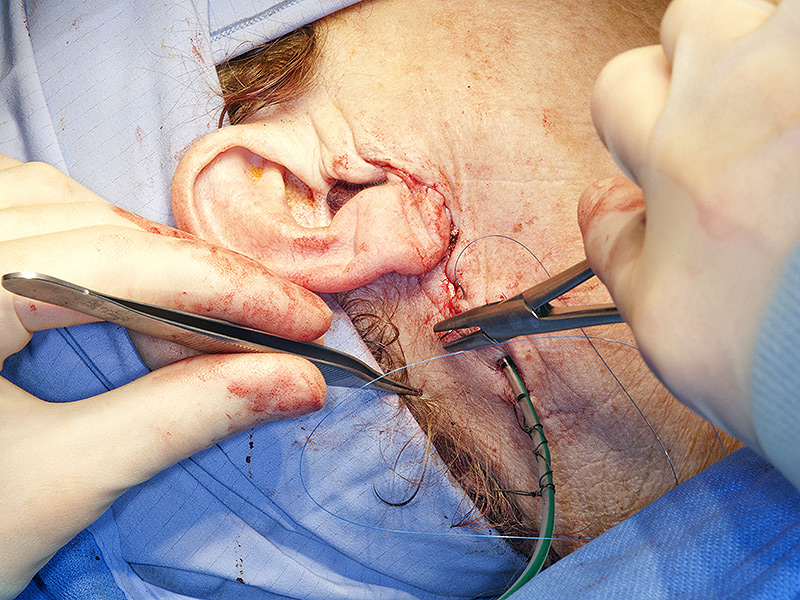Where are the salivary glands located in the mouth?
We call the major salivary glands the parotid submandibular and sublingual glands. They all secrete saliva into your mouth the parotid through tubes that drain saliva, called salivary ducts near your upper teeth, submandibular under your tongue and the sublingual through many ducts in the floor of your mouth.
Treatments
- Small stones might pass out of the duct without treatment. A doctor might be able to remove a stone by pressing on it if the stone is close to the opening of a duct.
- Ultrasound waves can be used to shatter large stones into small pieces.
- Deep or large stones are more difficult. If they cannot be removed and symptoms of pain or infection persist the entire salivary gland may need to be removed.
- Bacterial infections require taking antibiotics and extra fluid either by mouth or intravenously (IV). Warm compresses are placed on the infected gland. Chewing sour candies encourages the flow of saliva. Surgery may be needed to drain the gland.
- Antibiotics do not help cure a viral infection. The body must use it own defense system to clear itself of a virus. Bed rest increased fluids and acetaminophen for fever are the best ways to help the body cure itself.
- Small cysts may drain without treatment. Large cysts might need surgery.
- Benign tumors usually require surgery to remove them. Some are treated with radiation to prevent recurrence.
- Malignant tumors require surgery if possible. Some tumors need surgery only others require radiation and chemotherapy in addition to surgery. Radiation and chemotherapy are also used for tumors that are inoperable.
- Prescribed medications help decrease dry mouth.


